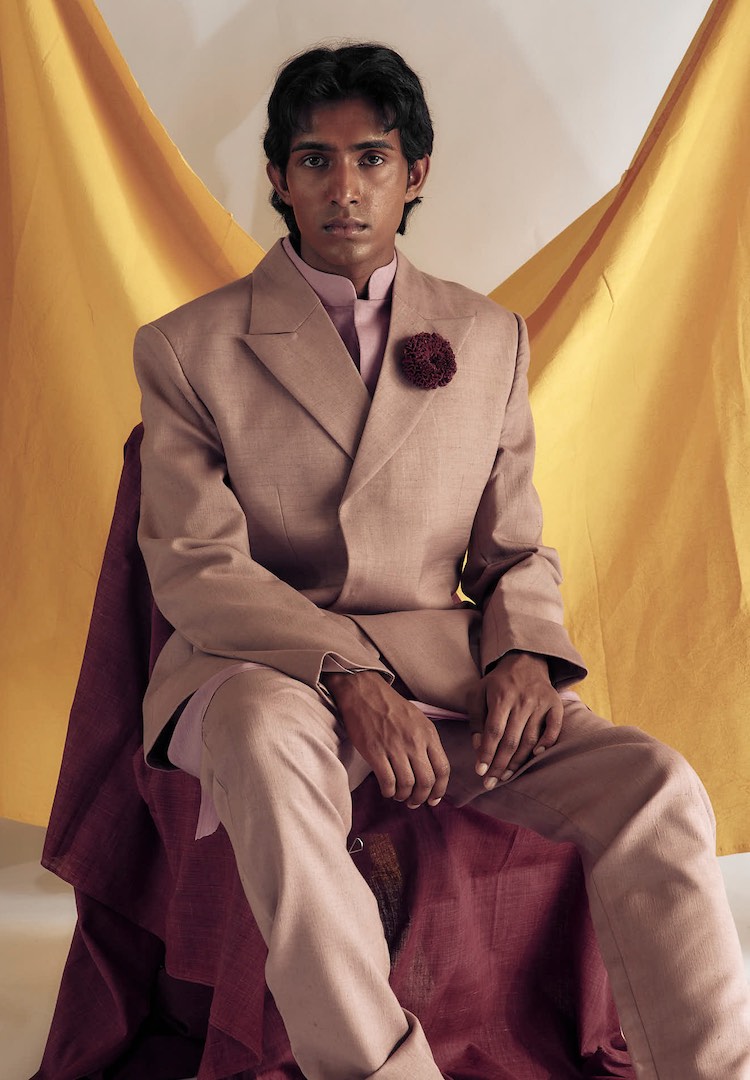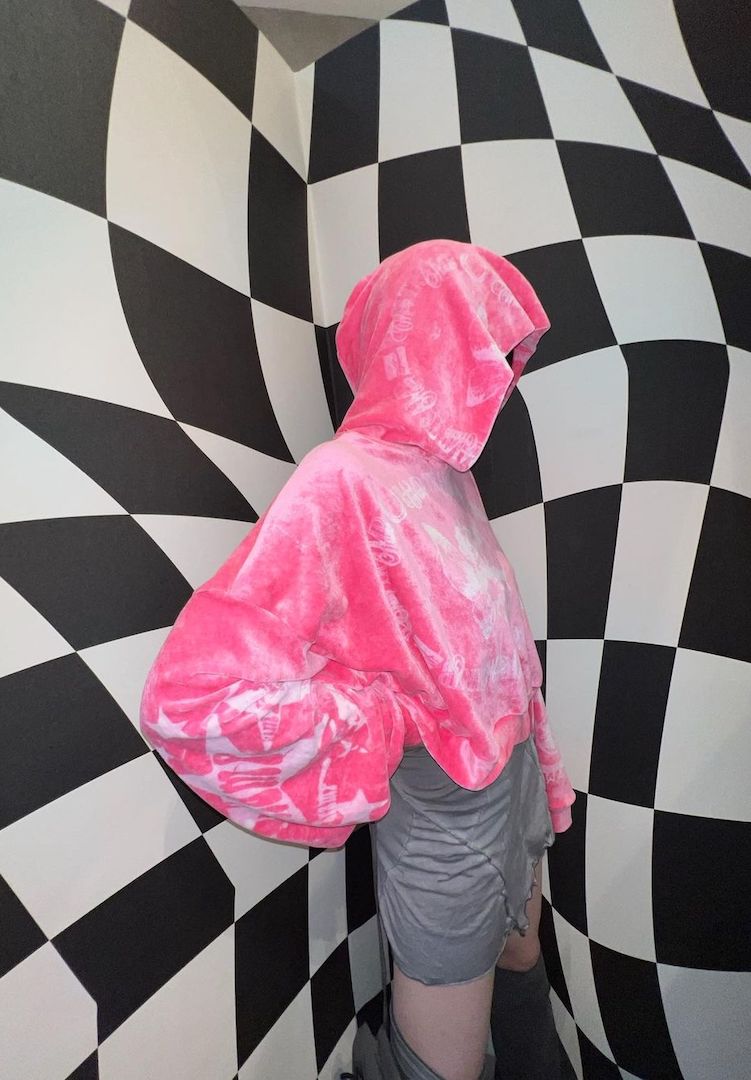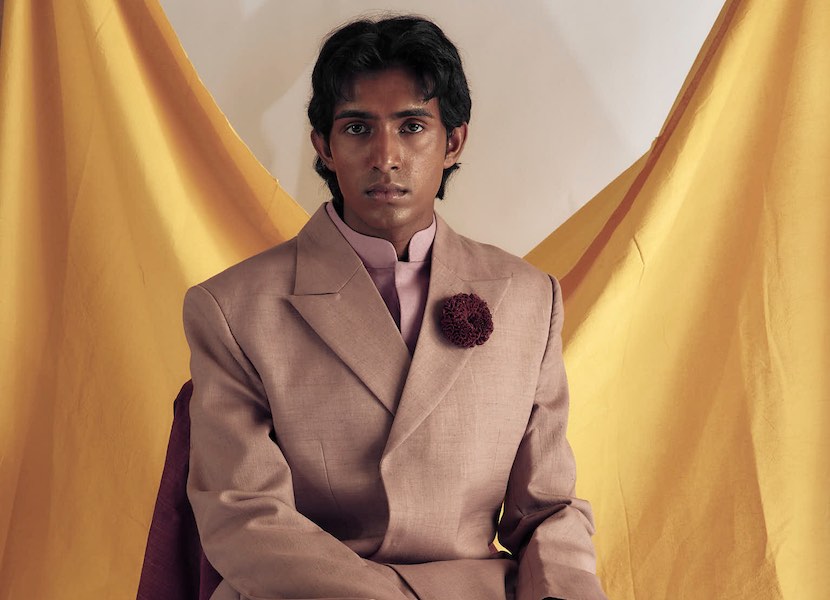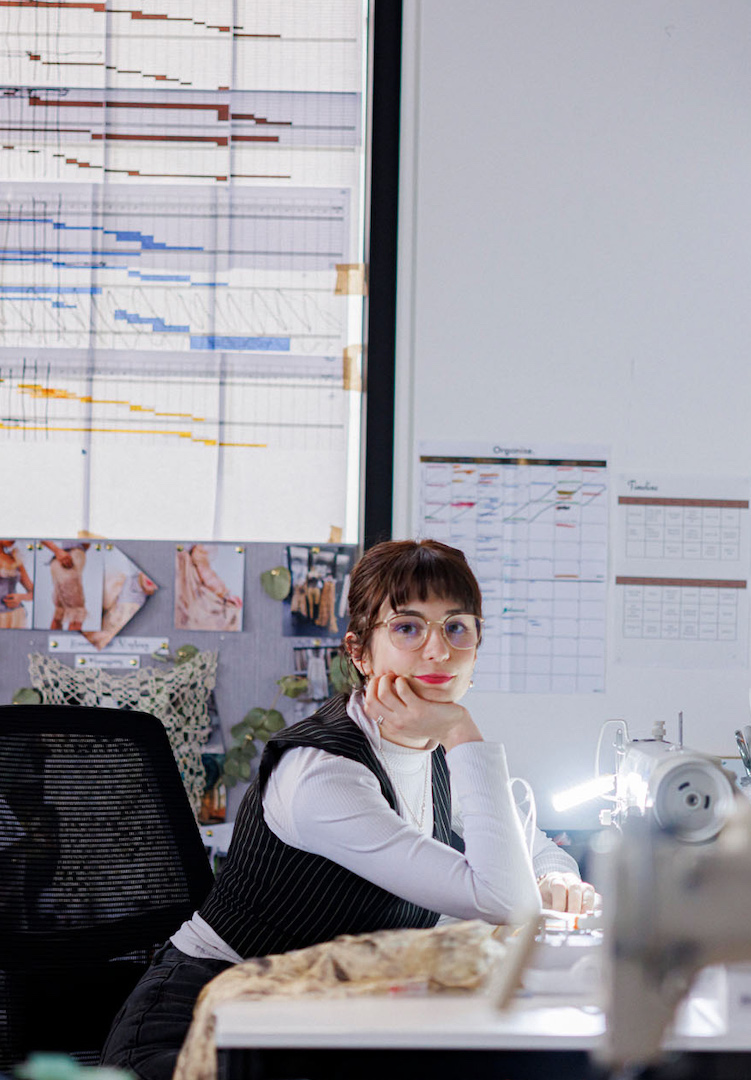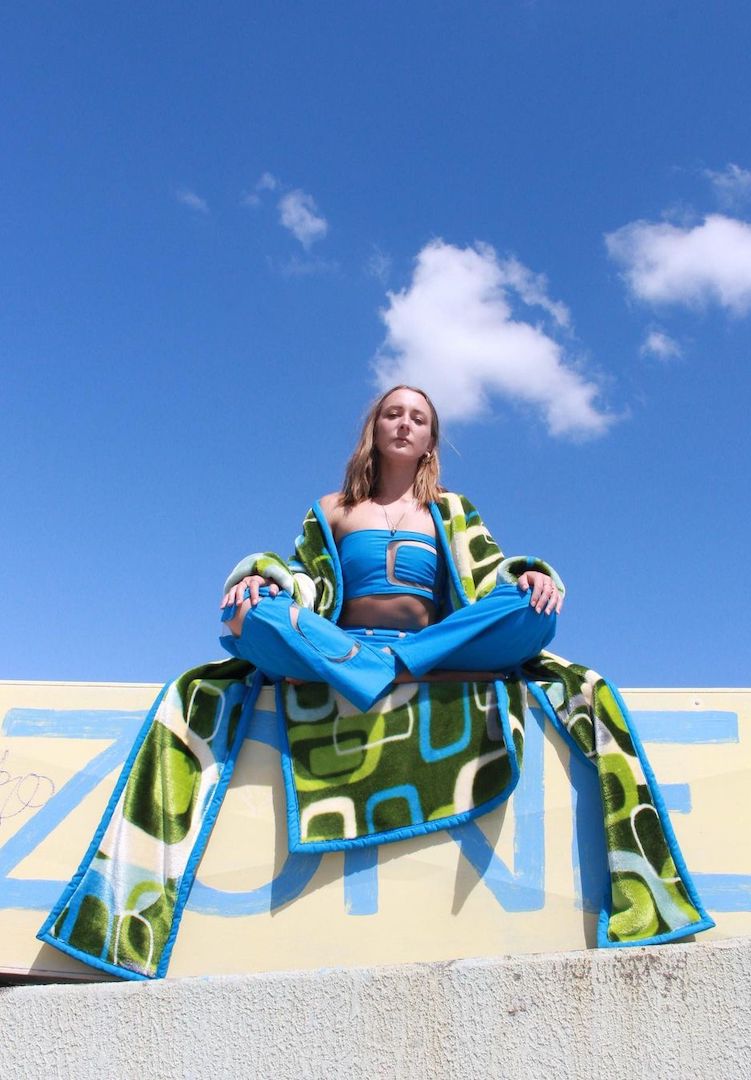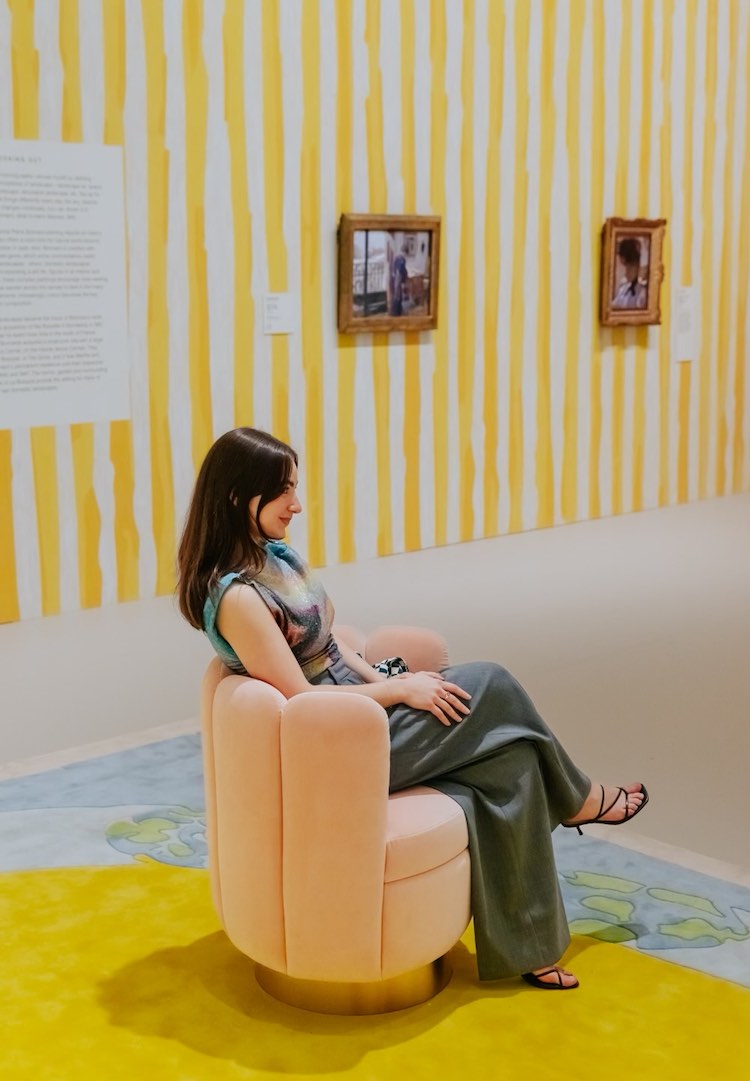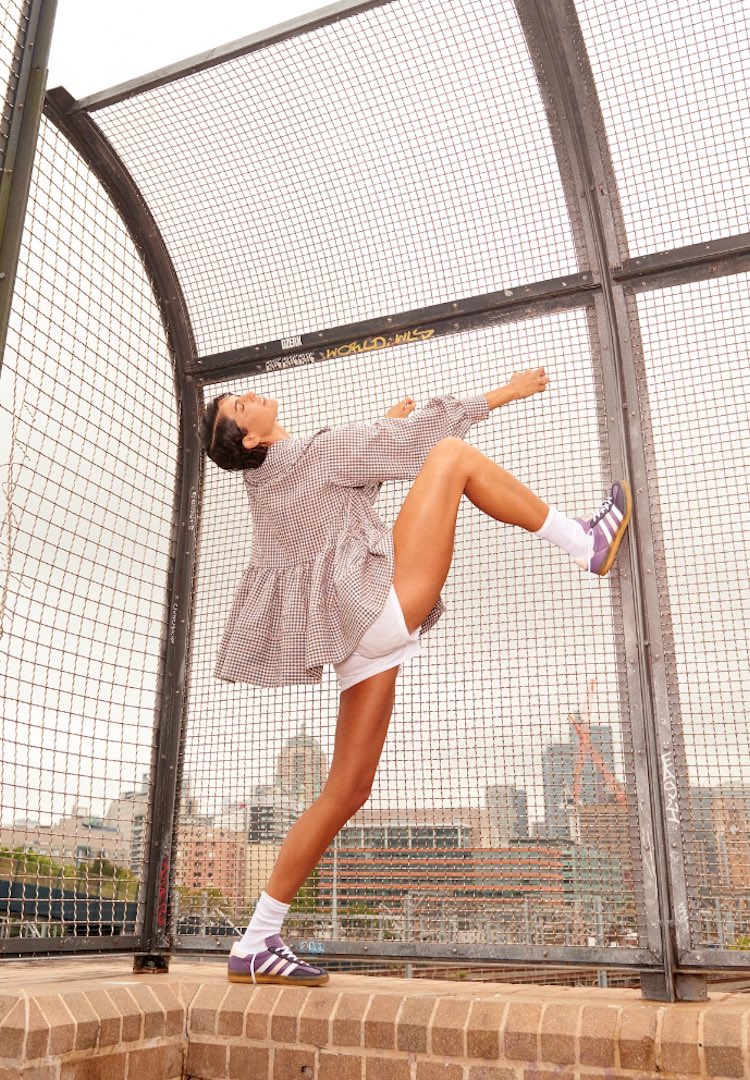Indian-Australian designer Abha Gupta is fusing traditional Indian textiles with Western tailoring
Photographer – Suleiman Thomas
Stylist – Kitty Le
Model – Vikram
WORDS – CAIT EMMA BURKE
“My main focus was on how the British interpreted Indian fashion and how Indians interpreted Western fashion.”
As an official media partner of PayPal Melbourne Fashion Festival, Fashion Journal is excited to once again be supporting the National Graduate Showcase x Emporium Melbourne, celebrating Australia’s top-ranked emerging fashion design talent. The top 10 leading graduates from across the country will exhibit their collections in a boundary-pushing presentation, showcasing experimental design and innovation.
Looking for more fashion news and features? Head to our Fashion section.
Over the next few weeks, we’ll be profiling each designer through a series of interviews. Next up is Abha Gupta. Originally from India, Abha currently lives in Melbourne and her recently completed master’s collection 1608 has won her a top spot in this year’s National Graduate Showcase x Emporium Melbourne. Handpicked from a pool of students from across Australia, Abha’s work merges traditional Indian handloom textiles, drape and construction techniques with Western tailoring. Below, she tells us about her collection.
Please introduce yourself to our readers.
I’m from India, one of the wealthiest countries globally, and my work reflects the richness of my homeland. In 2018, I studied textile design in India during my undergraduate years, gaining extensive knowledge about fabric technicalities through internships and hands-on experiences.
After finishing my studies, I joined a startup men’s clothing brand called Andamen, where I continued learning and experimenting with various elements like handloom fabrics, block printing techniques, jacquard weaving, precise tailoring and CAD development. Collaborating with different vendors and factories gave me significant industry experience.

When I decided to pursue a Masters in fashion in 2022, I was focused on pushing my boundaries in men’s fashion and sticking to more contemporary styles. However, upon arriving in Melbourne, I noticed a gap in the textile market that I felt I could fill with Indian handlooms and techniques.
As a designer, I enjoy experimenting with handloom fabrics and techniques, combining them with high-quality tailoring to create the final product. Looking ahead, I aspire to work more in androgynous fashion.
Tell us about your collection.
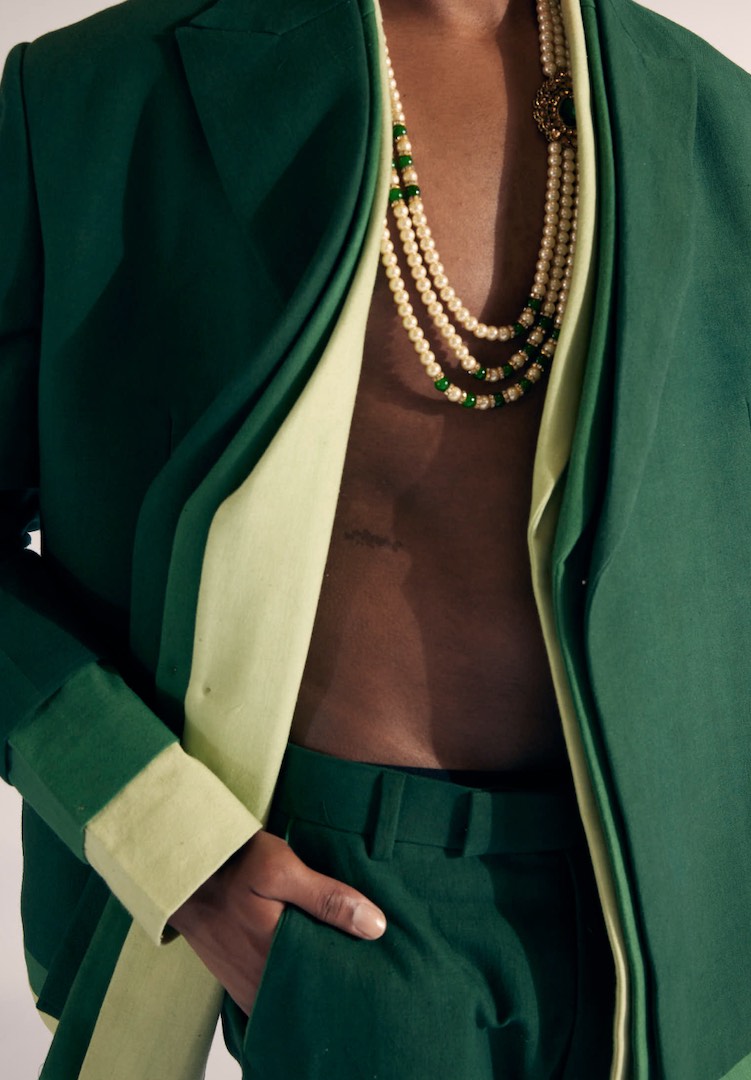
In my collection, I explore how British colonisation subtly influenced the codes and languages in traditional men’s clothing. I have also named my collection 1608, which is the year when Britishers first set foot in India. My goal was to combine my knowledge of traditional Indian handloom textiles, draping and construction techniques with my experiences in Western tailoring. I also challenged existing cultural ideas, built connections and highlighted the voices of marginalised communities through my work.
When did you know you wanted to get into fashion and textile design?
I didn’t do well in my 11th grade in my hometown, so my parents and siblings encouraged me to attend a boarding school. Back then, I wasn’t thrilled about the idea, but looking back, I’m incredibly grateful for their support because that one decision completely changed my life.

When I went to Jaipur for my studies, I absolutely fell in love with everything about the city. Just so you know, Jaipur is a major hub for arts and crafts. It’s famous for its palaces, architecture, traditional jewels, hand painting, pottery, antiques, block printing and more. During my two years there, I visited several museums and learnt many handicraft techniques, which inspired me to pursue textiles. This was in 2013; it has been 10 years and I still have the same love for handicrafts and textiles.
What were the major points of inspiration for your collection, and you more broadly as a designer?
Australia and India share a similar history as both were colonised by the British for a long time, and this colonisation changed the culture and crafts of both countries. This was a big inspiration for me. I wanted to go back in time and rediscover what was lost during the eras of digitisation and capitalism. My main focus was on how the British interpreted Indian fashion and how Indians interpreted Western fashion. As I continued working on this project, it became more interesting with new silhouettes and techniques coming into the picture.
Another significant inspiration for me was the materials used during the time of independence. Gandhi, who played a key role in India gaining independence from the British, encouraged people to use khadi, a handspun and handloom cotton fabric. He urged them to discard power loom fabrics introduced by the British. This entire story inspired me greatly, leading me to create my entire collection using handloom khadi in collaboration with local artisans in India.
Tell us about the experience of putting together your graduate collection.
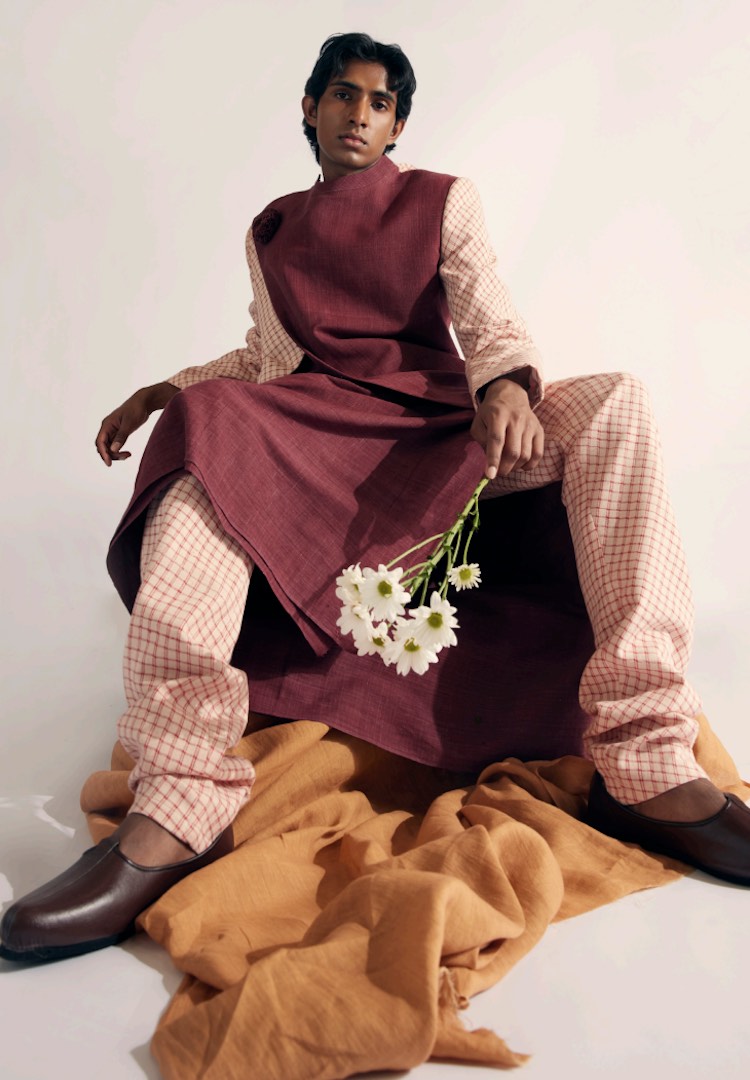
It was absolutely crazy! I still get goosebumps when I think about how I managed to finish it all in one piece (pun intended). The main challenge I faced with my project was money. Since I was funding the entire project myself, I had to work part-time at least four days a week. Juggling this with my graduation project was really tough. Another big obstacle was working with Indian artisans while being 10,000 miles away from them… coordinating across different time zones was not easy. Despite all the challenges, if I had to do it again, I would do it without a second thought.
What part does sustainability play in your design practice? And other ethical considerations?
[It’s] always a top priority for me. I strongly believe that a well-made textile, created sustainably, lasts longer in your wardrobe. Anything with good longevity automatically becomes a sustainable garment. However, I also think sustainability isn’t just about choosing the right material; it also involves ethical practices, such as ensuring fair wages.
The artisans I collaborated with are from a small town in Gujarat, India, and are mostly men and women from marginalised communities. I directly collaborated with them, ensuring that all the daily wages went to them and not through any intermediary.
Who do you think is most exciting in Australian fashion right now?

I absolutely love Strateas Carlucci’s work. They create androgynous fashion with a modern touch and unorthodox styling. I believe that gender-neutral fashion is becoming the future of the fashion industry and is growing a lot around the world. I also admire Christian Kimber’s work, which is exclusively focused on menswear. I had the opportunity to intern with him last year, and it was a luxurious experience. The fabrics he chooses and the finishing touches he adds reflect pure richness.


